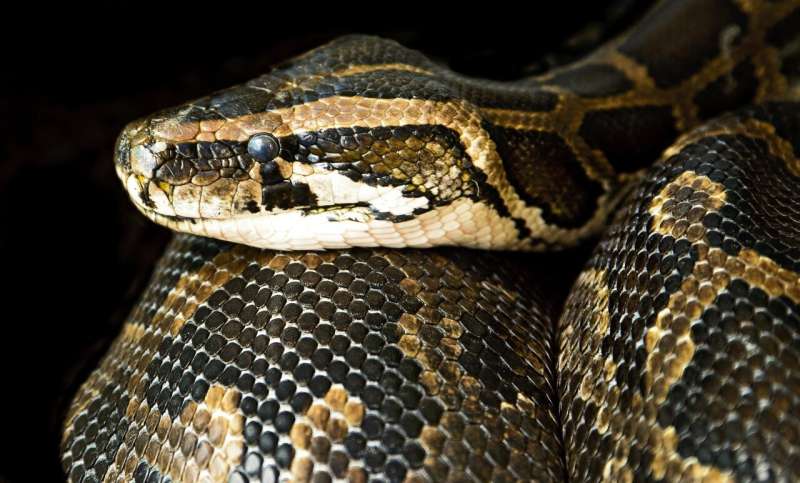How boas save themselves from suffocating when constricting and digesting dinner

The later stages of pregnancy can make life difficult as the fetus presses against the diaphragm, making it hard to breathe. But snakes that constrict their victims before swallowing them whole have to overcome the challenges of breathing while their lungs are restricted each time they dine. "With no diaphragm, they rely entirely on motions of their ribs," says John Capano (Brown University), adding that the earliest snake ancestors must have overcome the challenge of breathing while squeezing and digesting dinner.
But it wasn't clear how modern snakes save themselves from suffocating while constricting their victims. One possibility was that the animals adjust which region of the ribcage they use to inhale, depending on whether they are resting, throttling an animal or digesting. Still, no one had monitored in detail the breathing patterns of snakes in the act of subduing their dinner to check whether the animals can adjust which section of the ribcage they use.
So, Capano and Elizabeth Brainerd (Brown University) secured a blood pressure cuff around the ribs of boa constrictors to restrict their movements and discovered that the sinuous reptiles use different sections of the rib cage to breathe when their ribs are constricted. They found that the hind section of the lung works like a bellows, pulling air into the lung when the ribs further forward can no longer move because they are squeezing prey to death, and published their discovery in Journal of Experimental Biology.
Capano attached minute metal markers to two ribs in each reptile—one a third of the way down the snake's body and another halfway along—to visualize how the ribs moved using X-rays. He then positioned a blood pressure cuff over the ribs in both regions, gradually increasing the pressure to immobilize them. "Either the animals did not mind the cuff or became defensive and hissed to try to get the researcher to leave," recalls Capano, explaining that the reptiles really fill their lungs when hissing. "This was an opportunity to measure some of the biggest breaths snakes take," he says.
Reconstructing the boa constrictors' rib movements, it was clear that the animals were able to control the movements of ribs in different portions of the rib cage independently. When the boa constrictors were gripped by the blood pressure cuff a third of the way along the body, the animals breathed using the ribs further back, swinging the ribs backward while tipping them up to draw air into the lungs. However, when the ribs toward the rear of the lung were constricted, the snakes breathed using the ribs closer to the head. In fact, the ribs at the far end of the lung only moved when the forward ribs were gripped, drawing air deep into the region, even though it has a poor blood supply and does not provide the body with oxygen. The far end of the lung was behaving like a bellows, pulling air through the front section of the lung when it could no longer breathe for itself.
In addition, Capano, Scott Boback and Charles Zwemer (both from Dickinson College), filmed and recorded the nerve signals controlling the rib muscles when constricted by the blood pressure cuff, while Boback also filmed a snake with a GoPro as it dined, revealing that the ribs were not simply being held immobile. There were no nerve signals in the constricted muscles; the snakes had shifted to breathing by activating a different set of ribs further along the body.
As subduing and digesting a victim is one of the most energetic things these snakes can do, it was probably essential that they evolved the ability to adjust where they breathe before adopting their new rib-hindering lifestyle to ensure that they didn't suffocate themselves.
More information: John G. Capano et al, Modular lung ventilation in Boa constrictor, Journal of Experimental Biology (2022). DOI: 10.1242/jeb.243119
Journal information: Journal of Experimental Biology
Provided by The Company of Biologists




















